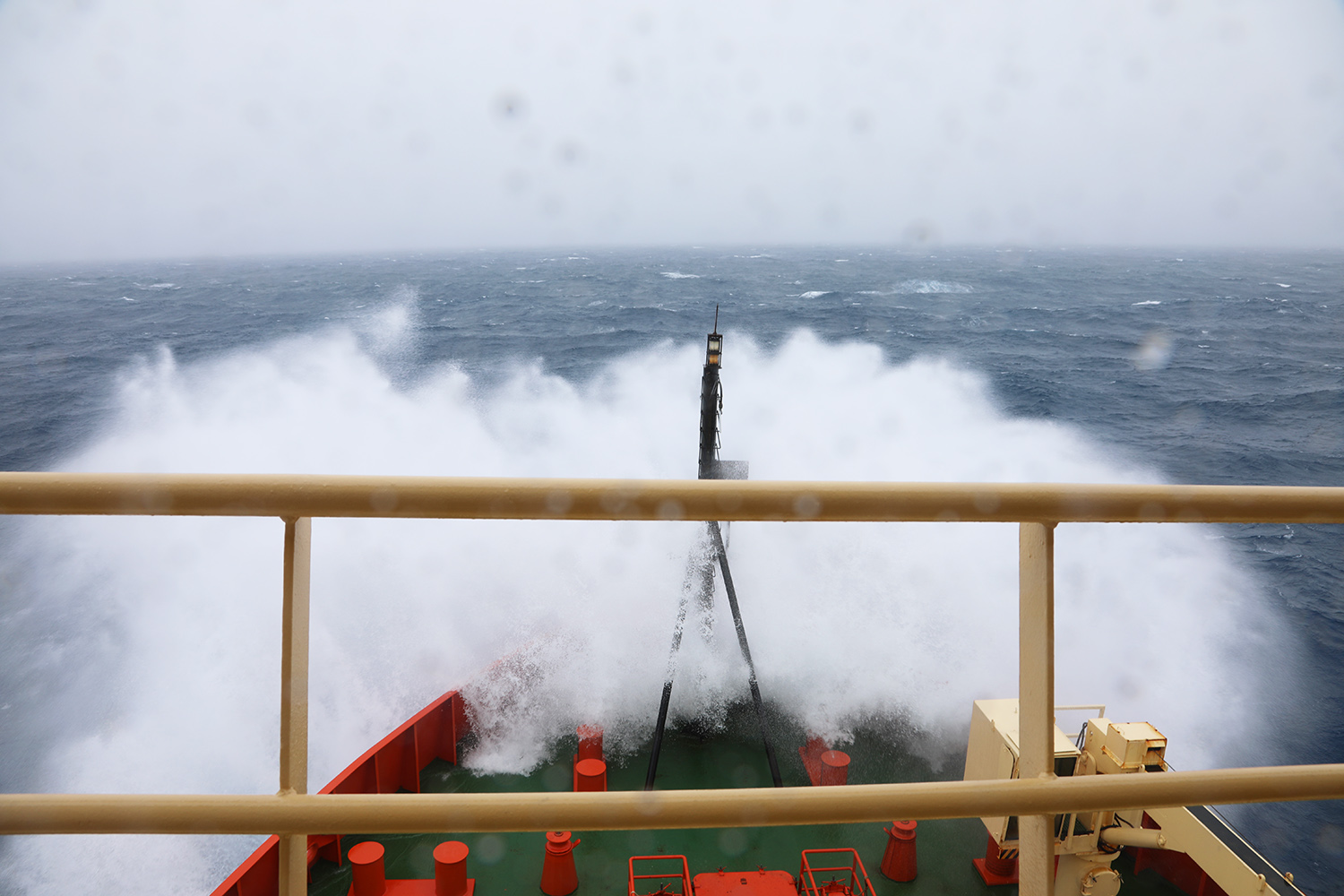A Room with a View
/I was going to write the next blog on THOR science activities to be conducted during NBP1902 , but the struggle to not bury myself in my bunk as the seas got rougher and rougher forced me to seek a room with a view. Since I needed to focus on the sea to avoid seasickness, I decided the sea should be the focus of this next post.
NBP ‘s current path approaches the second of two low pressure systems. Waves approaching 15 feet are regularly inundating both the lower deck and the main where our berth is located. Viewing the maelstrom from the large windows of the aft winch control room where I’m sitting, I can forget the sea sickness for a bit as I watch the incredible power and beauty of the sea, eyes fixed on the distant horizon as a rocking and rolling NBP slowly but very steadily works its way south.
Large wave on the starboard side of the aft deck.
It is after noon, and I realize I have missed lunch when suddenly from the radio comes a message that everyone outside needs to come in due to heavy seas. Feeling somewhat normal and wanting to know how fast or how close the ship is moving into the upper areas of the low (very cyclonic looking in my opinion) I head to the bridge. You wouldn’t know that the NBP is 6,800 long tons (15,232,000 pounds, or 6.9 million kg) in mass with 3000 10’ x 40’ (3 x 12 m) steel plates (the bow plates are 1 9/16 inches or ~4 cm thick) carrying 425,000 gallons (1.6 million liters) of gas. It was moving around with all the ease of a cork in a bath tub.
Left: A computer model of the low pressure system driving the waves. The NBP is the red target between 1016 and 1012 pressure contours. Right: This image shows the ship’s traverse to the Amundsen sea.
Meanwhile below deck, science planning and activities persevere.
Left: The monitors show the depth to the seafloor using a multibeam generated sound wave - 4426 meters (13,278 feet) with the reflected signal in two views. The range of colors indicate depth-blues are deepest and reds are shallowest. Right: Chris Linden, the NBP multibeam manager and expert, points out the location of the transducers that generate the sound waves and the instruments that will receive the signals that have been reflected off the seafloor.
The THOR team and NBP multibeam specialist Chris Linden set up the EM122 multibeam echo sounder to start gathering bathymetry information. As soon as the ship passed beyond the legal border of Chile, they would take advantage of the adjusted ship traverse to gather high resolution seafloor bathymetry from an area that hasn’t been mapped previously. There will be some challenges to acquiring the return signal to include the slow ship speed and the rough seas. The waves impact the ship’s hull to create interference (bubbles, for example) around the receivers, impacting the quality of the data.
Other ITGC scientists whose constitutions are more stalwart than mine, sit at workstations and tabletops that are festooned with pieces of anti-slide fabric (much like rubber carpet pads) utilizing predrilled holes for eye-screws that you tie bungee cords to; these go over top of your valued electronics to hold them in place.
Author Elizabeth Rush is ready for the rough sea crossing!
Back on the bridge of the NBP, I stumble around, still developing my sea legs as the motion of the ship is amplified due to its height off the water. Yet the near 360 degree view of the waves are both captivating and hypnotic, helping to subdue some of the seasickness. In fact, sitting on one of the control chairs is like having an unlimited ticket on the earths most incredible amusement park ride. But as we roll upwards of 20 degrees each way,
Tilt-o-meter and barometer on the bridge of the NBP
knowing that the larger sea is coming, the amusement fades for a few moments. THOR team member and Ph.D. student Victoria Fitzgerald adds “There is no getting off this ride”. According to Chief Mate Rick Wiemken, there is a buoy in the area that has measured a wave height of 80+ feet. That is the highest wave ever recorded!
NBP pitches forward into a large wave.
One would think TARSAN’s successful deployment of the Hugin AUV would appease Ran (which is the AUV’s unofficial name) the Nordic goddess of the seas. The crew of the ship reassure us that the storm will still pass in front of us. And while we will see a couple more days of rough seas, the Palmer (with 80 research cruises since coming into service in 1992) will handle it. We will have gained a deep appreciation and respect for the amazing people who are taking care of us, and the forces of nature around us that we hope to better understand.














